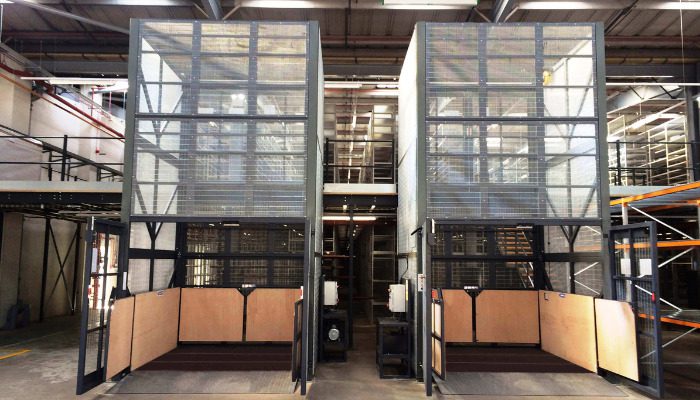
Innovative solutions that maximise the use of the available resources are in great demand in today’s quickly expanding world when space is at a premium and efficiency is important. Mezzanines have become a useful and adaptable solution to the problem of maximising space usage. These intermediate floors, which are located between the main floor and the ceiling, add another level to a building and present a wide range of opportunities for increasing usable area.
Due to their capacity to maximise vertical space, mezzanine flooring have become more popular across a range of sectors, from manufacturing and office settings to retail and warehousing. In this essay, we delve into the realm of mezzanines and examine their characteristics, advantages, and the revolutionary changes they have brought about in contemporary architecture and design.
Understanding Mezzanines
Mezzanines, also referred to as intermediate floors, are buildings that offer an extra level, typically between the floor and the ceiling. These platforms, which are often semi-permanent, provide a useful approach to vertically increasing the amount of usable space without having to invest in expensive construction or make significant changes to the current building. Depending on the intended usage and aesthetic preferences, mezzanines can be built from a variety of materials, including steel, aluminium, or even wood.
Benefits of Mezzanines
Maximising Space: One of the primary advantages of mezzanines is their ability to optimise vertical space. By taking advantage of the overhead area, mezzanines effectively double the usable floor space, allowing businesses to accommodate increased storage, workstations, or additional facilities.
Reasons Why You Need to Choose Mezzanines
Cost-Effective: Compared to traditional construction methods, mezzanines offer a cost-effective solution to expand available space. Instead of investing in new real estate or undertaking extensive renovations, businesses can utilise mezzanines to increase their capacity within their existing premises, saving both time and money.
Versatility and Customisation
Mezzanines can be tailored to meet specific requirements. They offer flexibility in terms of size, shape, and layout, making them suitable for a wide range of applications. From office spaces and storage facilities to retail showrooms and production areas, mezzanines can be customised to cater to diverse needs.
Applications of Mezzanines
Warehousing and Distribution: Mezzanines are widely used in the warehousing and distribution industries to optimise storage space. By incorporating mezzanine platforms, businesses can efficiently store inventory, organise picking areas, and streamline their logistics operations.
- Retail Spaces
Mezzanines offer a creative solution for retailers to expand their sales floor while maintaining an open and inviting atmosphere. They can be used to create additional display areas, fitting rooms, or even cosy lounges, enhancing the shopping experience for customers.
- Manufacturing and Production
Mezzanines provide an efficient way to separate different stages of the manufacturing process. They can house assembly lines, quality control stations, and even staff amenities, allowing for a more organised and streamlined workflow.
- Office Environments
Mezzanines can be employed to create additional office space within commercial buildings. They offer a contemporary and modern solution for companies looking to expand their workspace without the need for relocation.
Guide to Choosing the Best Mezzanines
Choosing the best mezzanine requires careful consideration of various factors to ensure that it meets your specific needs and provides optimal functionality. Here are some key points to consider when selecting a mezzanine:
- Purpose and Intended Use
Identify the primary purpose of the mezzanine. Will it be used for storage, office space, manufacturing, or retail displays? Each application has different requirements, such as load-bearing capacity, access points, and safety features. Clearly defining the intended use will help determine the appropriate design and specifications.
- Space and Layout
Assess the available space and layout of your facility. Consider the dimensions, ceiling height, and any obstructions or architectural constraints that may impact the installation of a mezzanine. Mezzanines can be customised to fit various space configurations, so understanding your spatial limitations will help determine the size and shape of the mezzanine.
- Load-Bearing Capacity
Determine the weight and load requirements of the mezzanine. Consider the weight of equipment, inventory, or people that will be placed on the mezzanine. It’s crucial to choose a mezzanine that can safely support the anticipated load without compromising structural integrity.
- Building Regulations and Permits
Familiarise yourself with local building codes and regulations governing mezzanine construction. Ensure that the proposed mezzanine complies with all safety standards and obtain the necessary permits and approvals before installation. Consulting with a structural engineer or architect can help ensure compliance with building regulations.
- Material and Construction
Evaluate different materials used for mezzanine construction, such as steel, aluminium, or timber. Each material has its advantages and disadvantages regarding durability, aesthetics, and cost. Consider factors such as fire resistance, maintenance requirements, and longevity when selecting the most suitable material for your mezzanine.
Conclusion
In a world where space is a valuable commodity, mezzanines have emerged as a game-changer. Their ability to optimise vertical space, their cost-effectiveness, and their versatility make them a popular choice across various industries. Mezzanines provide businesses and individuals with the opportunity to unlock untapped potential within their existing structures, reimagining space and improving overall efficiency. As we continue to explore innovative solutions, mezzanines will undoubtedly play a significant role in reshaping our environments and transforming the way we utilise space.
